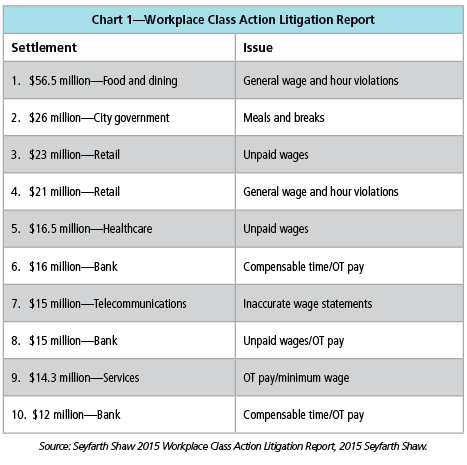Keeping track of employee time and attendance is at the heart of your global workforce, and it’s probably the most substantial cost of your business. Knowing when, where, and how your people around the world are working is essential to gaining insight into your organization’s labor costs. High-performing global organizations know that the more you understand and control labor costs, the more profitable and competitive your organization will be.
Essentially, time is the bottom line.
Part I of this article explored the idea that time and attendance in today’s business world is a conglomeration of several functional areas of the business and that there should be an understanding of roles, and accurate employee pay should be considered a shared responsibility across the entire organization.
Part II answers the question, what can an organization do to better define roles and responsibilities for managing time and attendance?
Build a Center of Expertise (CoE)
The development of a CoE should be an organizational evolution of aligning functional business area resources (HR, IT, etc.) to a delivery role within the CoE. The functional business roles as mentioned in Part I of this article also appear below as integral team members of a robust CoE. It is important to note that resources aligned to the CoE may or may not be deployed at a 100% utilization rate.
Implementing a time and attendance-focused CoE is a critical function across high-performing organizations. CoEs come in all shapes and sizes, and just about every organization determines its own requirements and structure. In the small- and medium-sized business (SMB) market, the time and attendance CoE is likely to be an informal function and is more or less a central body of knowledge. In more enterprise and global organizations, the CoE typically becomes a specific business function.
Regardless of size and formality, the CoE should be the control point of the organization’s time and attendance landscape, acting as air traffic control for all things time-and-attendance-related. It is the CoE’s responsibility to work with the business to establish critical inputs and outputs of the process and the system. The CoE provides its value as a catalyst responsible for bringing all relevant functional business stakeholders to the table. It is there to solve policy, process, and technical issues related to time and attendance.
Compliance
It is no secret that many organizations struggle to stay abreast and up to date with labor requirements. The labor regulations landscape is constantly changing. A key attribute to a high-performing time and attendance strategy is your organization’s initiative to research employment and labor law requirements. In the United States alone, many employee class-action lawsuits are filed annually. These suits typically concern actions against organizations due to unfair pay practices. Almost always, this is because of the organization’s improper interpretation and/or applicability of pay requirements to its employees.
Here are tips to help your organization establish its foundation of compliance:
Know Where You Operate
There are typically national/federal and state/provincial labor laws to which companies must adhere.
Know Your Employee Landscape
Know your head count per type of employee and how to classify your employees per labor law standards (exempt, nonexempt, hourly, salary, salary-overtime eligible, etc.). Be sure to consider (if applicable) your organization’s contractual/contingent/temporary workforce.
Work With Your Legal Department
Establish a relationship with your federal and local governments’ labor resources. Research and understand your labor compliance obligations. Review open class-action lawsuits on websites such as www.classaction.org. Because the regulatory landscape is continually changing, it is important that this activity is also continuous. Your organization should consider establishing a planned follow-up with the above authorities on a quarterly basis.
 If your organization is bound to union agreements or contracts with temporary employee agencies, you must know and understand your contractual obligations and their impact on employee pay. Know when your contracts expire. Know what policy changes are worth negotiating, especially if your organization plans to change an element of employee pay or benefits (such as vacation/PTO time). Key compliance risk areas include overtime pay calculation and contingent worker definition.
If your organization is bound to union agreements or contracts with temporary employee agencies, you must know and understand your contractual obligations and their impact on employee pay. Know when your contracts expire. Know what policy changes are worth negotiating, especially if your organization plans to change an element of employee pay or benefits (such as vacation/PTO time). Key compliance risk areas include overtime pay calculation and contingent worker definition.
The Standardization Effect
Many companies, consulting firms, and operational models/methodologies advocate the power of standardization. A high-performing time and attendance strategy includes standardization across three key areas:
- Pay policies and practices
- User experience
- Systems integration
Pay policies are policies that quantify how employees earn their pay. This aspect of time and attendance is influenced by the company’s requirement to be in compliance with labor regulations. If your organization has employees covered by a collective bargaining agreement, more than likely the CBA will have defined attributes of pay.
Standardizing pay policies reduces the complexity of configuration and system maintenance. Probably more importantly, it reduces compliance risk. Your organization should look deep into its policies and system configuration to find areas of opportunity to standardize. Typically, these are areas within the configuration settings, commonly referred to as policy attributes.
At face value, a general HR policy may be that your employees earn weekly overtime for all hours worked in excess of 40. However, that policy does not indicate configuration policy attribute-level detail. The policy should also divulge when the workweek resets.
Leading-class organizations are diligent in their understanding of the deep layers of time and attendance and their impact on pay policy determination and labor cost. Understanding at that depth can uncover potential policy harmonization opportunities. It can also provide insight into labor cost leakage.
Typical labor cost leakage is a result of key policy aspects such as overtime and consecutive-day pay, utilization of punch rounding, meals/breaks, and pay for working/not working on company holidays.
A simple example of labor leakage:
- Average employee is paid seven minutes in excess of his or her scheduled work time daily
- There are no punching rounding or punch restriction rules enforced within the system configuration
- Your organization employs 50,000 hourly employees
- The average employee works 250 days per year
- The average hourly wage is $18
Calculation example:
7 minutes per day overage (0.12 hour) x 50,000 employees x 250 days worked = 1.5 million hours “over” pay annually x $18/hour wage = $27 million of additional labor costs annually
Based on the above example, it is quite simple to understand the effective savings your organization could realize if you delve into your policy landscape. If your organization is armed with a deep understanding of what is required and is ethical from a labor law perspective, it can draft pay policies and contracts that promote compliance and position the organization to potentially decrease its labor costs. Converting these policies into accurate system configuration and managing that configuration is an ongoing task. By streamlining your policies, you are also reducing your system upkeep burden, all while staying compliant.
Time-off policies are policies that define how employees are paid for their time-off from work. These are commonly referred to as vacation, sick, or paid time off (PTO) accrual policies. Some organizations try to standardize their time-off policies and some achieve that standardization.
Even though organizations may standardize policies, they may implement policies that are costly to the business. Some organizations have begun to shy away from providing nonexempt employees a lump-sum “bucket” of time-off hours at the beginning of every year. This has been primarily to reduce the amount of vacation/sick time payout hours they may be required to pay employees when their employment has ended. Switching to an “earn-as-you-work,” accrual-based policy is more cost-effective to the organization. This type of accrual policy is still equitable to the employee, as it is time-off earned for his or her time worked.
Practice Makes Perfect
It is imperative that the organization place the accountability of accurate timekeeping on the employee. All employees are responsible for the accuracy of their time and attendance. After all, each employee’s time equals his or her paycheck.
A consistent issue we face with clients is time exception/error management. Time exceptions and errors are created in various situations. Exceptions/errors are events configured in a client’s system and therefore are very client-specific. However, there are some general truths and a few improvement opportunities on which your organization can take action:
- Understand that the more end-user system interaction (punching in/out, making transfers, etc.) your organization desires, the more you are inviting the chance for errors. Focus on capturing the right amount of transactions within the system. With more end-user action comes more manager/timekeeper interaction within the system.
- Utilize as much automation as possible within the system. Most time and attendance systems can automatically deduct time from an employee’s day for standard break and meal times. They can also utilize bonus configuration to pay for work activities, like donning and doffing a uniform.
- Where possible, restrict employee punching prior to and after their scheduled shift start time. Many time and attendance systems can do this via settings options. The organization can also enforce this by placing time clocks closer to the employees’ point of work versus general areas of employee traffic.
- Enforce sound timekeeping by employees. If possible, explore the option of implementing progressive discipline policies tied to time and attendance infractions. Organizations, in general, experience significant increase in timekeeping accuracy when they implement infraction-based employee progressive discipline policies.
 Chris Thoman, PMP, has more than seven years of experience leading global enterprise workforce management initiatives. Thoman has a robust background inclusive of leading manufacturing operations and process improvement as an enterprise implementation project manager for the global leader in time and attendance technology/professional services, and as a client advocate consultant for EY. His work at the firm focuses on helping enterprise organizations develop and execute strategic workforce management initiatives, such as technology business case development, HR policy harmonization/standardization assessment and execution, and enterprise systems implementation (HRIS, time and attendance, and payroll). He has implemented 100+ clients across differing technology platforms and differing sectors.
Chris Thoman, PMP, has more than seven years of experience leading global enterprise workforce management initiatives. Thoman has a robust background inclusive of leading manufacturing operations and process improvement as an enterprise implementation project manager for the global leader in time and attendance technology/professional services, and as a client advocate consultant for EY. His work at the firm focuses on helping enterprise organizations develop and execute strategic workforce management initiatives, such as technology business case development, HR policy harmonization/standardization assessment and execution, and enterprise systems implementation (HRIS, time and attendance, and payroll). He has implemented 100+ clients across differing technology platforms and differing sectors.